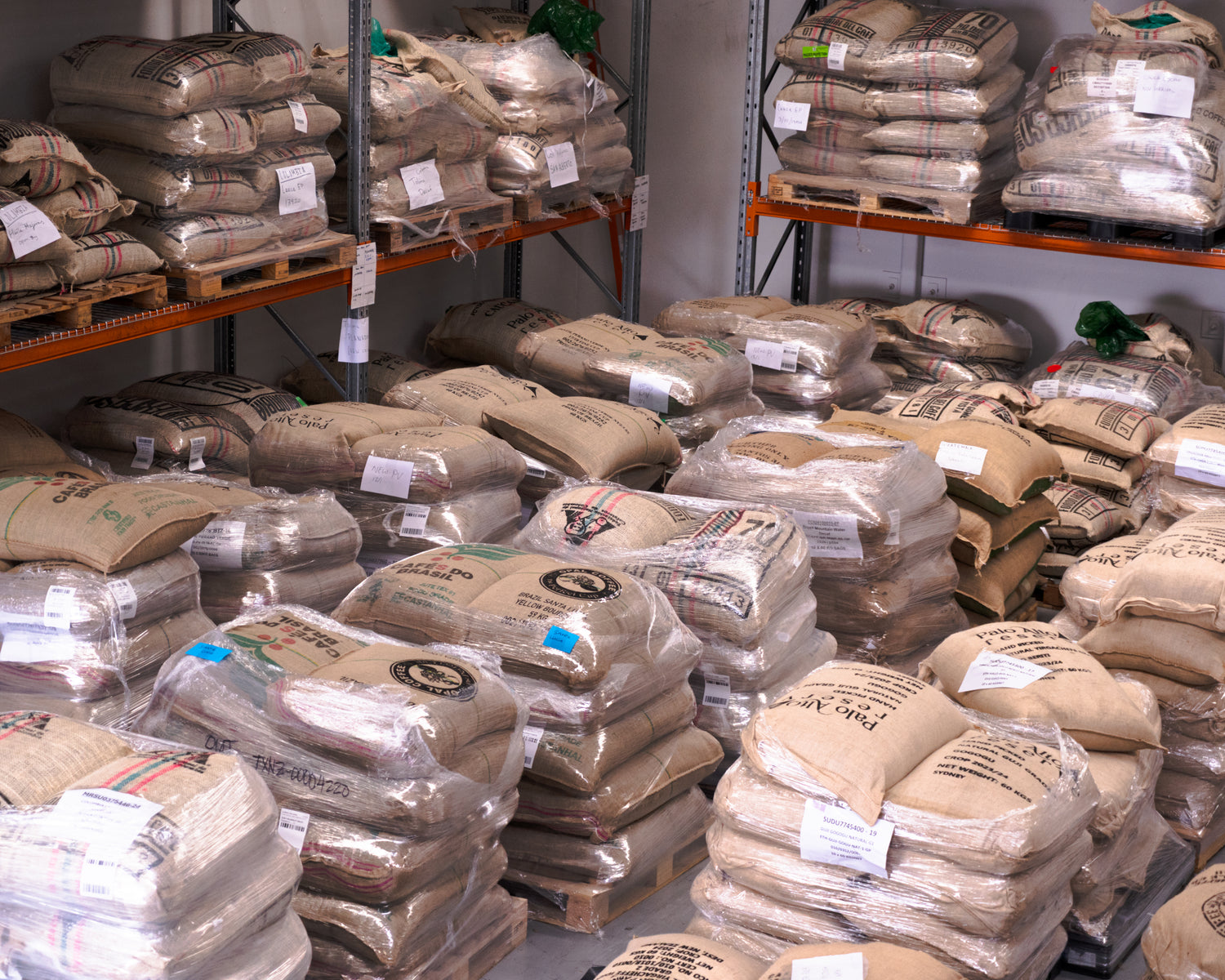Selecting Green Coffee Beans with Kaffelogic

I have my roaster, now what?
Now is the exciting part of sourcing your next cup of coffee to roast at home. When it comes to selecting your green coffee there are a few things to consider, flavour notes, processing method and altitude. Like a fine wine, coffee comes with its own terroir and will have you sipping on your perfect cup in no time.

Where can I find green coffee?
A great place to start is at your local roastery. If you are a regular and enjoy the coffee that you are being served, ask if you can purchase some of the green that they are roasting. Maybe they will even throw in some tips on roasting it!

Distributors & Traders
The first place to look is where you purchased your Kaffelogic from, most of our distributors offer a selection of green coffee, as well as profiles! If your local distributor doesn’t then head down to your favourite local roastery and ask if you can buy some from them. There are also companies that specialise in the the trading of green coffee that offer a fantastic selection and will sometimes sell small batch quantities.
How do I select what beans to roast?
A good place to start when selecting your first order of green coffee is to head down to your local specialty cafe, roastery, or a local community cupping event. After a few visits, or all in one if you have the caffeine tolerance, try your favourite coffee with a few of the different origins that they offer. Make a note of its country of origin and processing method. If there is one that stands out to you, ask your roaster if you can purchase some of that coffee green. Otherwise head online to your local Kaffelogic distributor and look for a coffee that is similar, most of our distributors sell green coffee. In New Zealand we have a great array of Colombian and Ethiopian coffees that offer many unique experiences within a single region. When looking at green coffees, cheaper is not always best. Generally there is a quality gap between low grade and high grade coffees. If you want the best possible taste experience a, for example in Ethiopia a Grade 1 will do you better than a Grade 4.
-

What is green coffee?
That delicious cup that you have every morning, or at your local roastery wasn’t always brown and ready to drink. Its journey begins in a land far far away (in most cases) as a cherry. A roasted coffee bean was once the seed of a coffee plant.
Around the equatorial belt, you will find the majority of the farms that cultivate and produce coffee. This is the ideal climate for coffee plants to grow. Farmers plant their trees at high altitudes in mountains and it can take anywhere between 2 to 4 years to mature and bare a little red cherry. Coffee trees growing in different places all showcase different qualities and flavours. Displaying different cup qualities and flavour notes.
That cherry is then hand picked and taken to be processed into what we call green coffee. After processing it is placed into sacks and boxes and sold to roasteries and green bean traders around the world.
-

What is processing?
Coffee processing refers to the method of removing the skin and fruit from the seed, as well as the fermentation that takes place during this process. There are 3 main processing methods known as Natural, Washed and Honey processing. In the industry currently we are seeing more and more processing methods such as Anaerobic versions of the original as well as other experimental methods like Carbonic Maceration and many more.
Natural processing is the method of leaving the fruit intact on the bean and drying them out together. This method of processing generally can bring out fruity and sweet flavours.
Washed processing focuses on the bean itself, removing the fruit and skin prior to fermentation. For this reason it is easier to taste the effects of the varietal, origin, weather and fermentation. They tend to have more clarity in the cup, highlighting their origin characteristics.
Honey processed coffees lie somewhere in between a washed and natural. In this method, the skin of the cherry is removed whilst a varying amount of fruit, or pulp, is left on the bean. Depending on how much fruit is left on the bean the honey processing ranges from White, Yellow, Golden, Red, Black. White being the least amount of fruit and black being the most fruit left on the bean. This method tends to bring out fruitiness, but not as much as the natural method does.
-

Why does altitude matter?
Altitude is an important aspect of a coffee to look at as it gives you some insight into what you can expect the coffee to do and taste like. It is important to note that there are delicious coffees across the entire range of growing altitudes, but there are some general things to keep in mind.
Coffee plants grown at a high altitude will take longer to mature and develop compared to those grown at lower altitudes. That has a significant impact on the taste of the coffee. At higher altitudes, the temperature is cooler and the oxygen is scarce which leads to a longer development of the coffee cherry. This extended growth allows for more complex sugars to be produced and therefore more desirable flavour notes. This also makes the coffee denser which effects how it will need to be roasted.
Along with more complex sugars, higher grown coffees also tend to have more acidity in the cup compared to lower altitude coffees. At higher altitudes coffee plants produce less caffeine which results in less bitterness and allow for more sweetness in the cup.

Your perfect cup
Whether you like light roasts, dark roasts or something in between. Bright and fruity flavours or smooth and nutty notes. When it comes to your coffee, there is no wrong answer. All that we can do is educate and help guide you towards finding your perfect cup. The best thing that you can do to start is look for some green coffee with characteristics and flavour notes that sound tasty to you and go with that one. The perfect cup of coffee is one that you enjoy.



